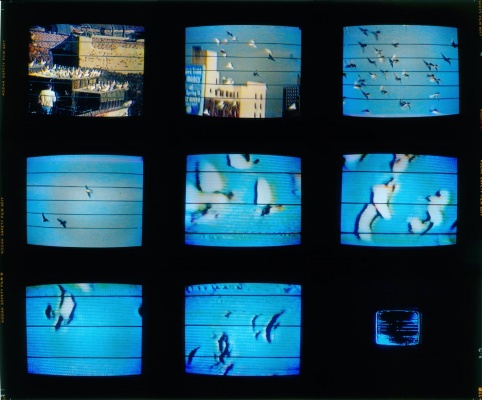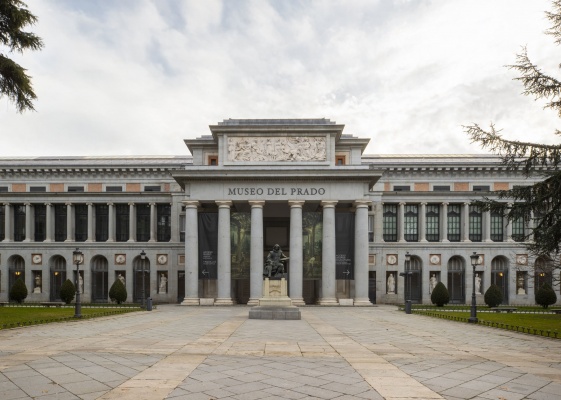Descripción de la Exposición ------------------------------------------------------- -------------------------------------------------------
Muestra inaugural de este nuevo espacio. Después de 6 años sin que su obra se haya expuesto en Brasil, se presenta esta muestra de la artista brasileña nacida en Suiza, Mira Schendel, reuniendo 148 obras seleccionadas, la mayoría de ellas nunca antes exhibidas, realizadas entre los años 1950 y 1980. More than 25 years since the death of Mira Schendel, each new exhibition dedicated to the artist still manages to surprise us with littleknown or never before exhibited works. In the postwar art scene it is uncommon to find artists who, like her, produced work that not only maintains its power over the years, but still causes that feeling of freshness and novelty after so long. And, as much as we try to frame her production within an art movement or style, it escapes any fixed denominations. The complete vision of Mira’s body of work, which we are far from conceiving in its entirety, is constantly expanded by new discoveries that reveal a fruitful diversity of series and styles, keeping very strict interpretations in check. Mira probably worked ceaselessly and her curiosity and impetus of experimentation led her to always incorporate new materials and practices in her art. That is the first impression that arises when we look at the group of works gathered here. Alongside her best-known series Monotipias [Monotypes], oil drawings on fine rice paper; Toquinhos [Little things], letters and collages of colored paper cutouts; and the paintings in tempera and gold leaf from her last phase, we find the gouache drawing (Untitled, 1954) which refers to the asymmetrical façades of her paintings from the 1950s, but that also makes it possible to foresee constituent elements of these other series. Despite being a work from the beginning of her career, dating from the year in which Mira moved to São Paulo and held her first solo exhibition at the Museu de Arte Moderna, this small drawing already indicates her preference for an irregular geometry in asymmetric compositions, where there is interest in balancing light and transparency with opaque color fields. It also reveals the organic nature of her lines, at the same time smooth and incisive, which arise spontaneously on the surface of the paper. In the case of another group of scarcely studied works by Mira, the Embroidery of the early 1960s, it is possible to witness her commitment to explore the expansive character of ink (ecoline) and its impregnation on handmade paper, where fabrics incorporate stains formed by the unpredictability of the material. In these delicate drawings, we also see a “pictogramatic” universe being formed, which will appear in most of her later work (and soon after be joined by letters and numbers), a clear recollection of her admiration for Uruguayan artist Joaquín Torres Garcia. In the fun “London Diary” (1966), in which Mira uses, it seems for the first time, modeled letters (Letraset); as well as in the drawing Bar Tangará (1964), where we witness the witty and humorous side of the artist that later would reappear with force in the rare spray paint drawings of the 1970s, in bold and bright shades; and in the colorful series Toquinhos, where she plays with the creation of a particular language in which letters are associated with colors. In some manner, her joie de vivrea approaches the childlike but nothing superficial lightness of artists such as Paul Klee, Matisse and Volpi. Deep down, it is noticeable that nothing in her work was fixed: for Mira, the making of art was constituted above all as a living experience, and therefore always changing. In one of the few statements about her activity, she said she sought to eternalize, by means of the “symbols” (which were her fabrics, colors, letters, shapes and gestures), the dynamism of life. As a student of phenomenology, among other Eastern and Western philosophies, she knew, however, that as such this same experience did not escape the constant balancing of powers in tension. In this sense, I believe that today we cannot assess the quality of her work without taking into account these hardly orthodox developments, which are proof of the versatility and vigor of her achievement.

Exposición. 08 may de 2025 - 14 sep de 2025 / MNAC - Museu Nacional d'Art de Catalunya / Barcelona, España

Formación. 30 oct de 2025 - 11 jun de 2026 / Museo Nacional del Prado / Madrid, España